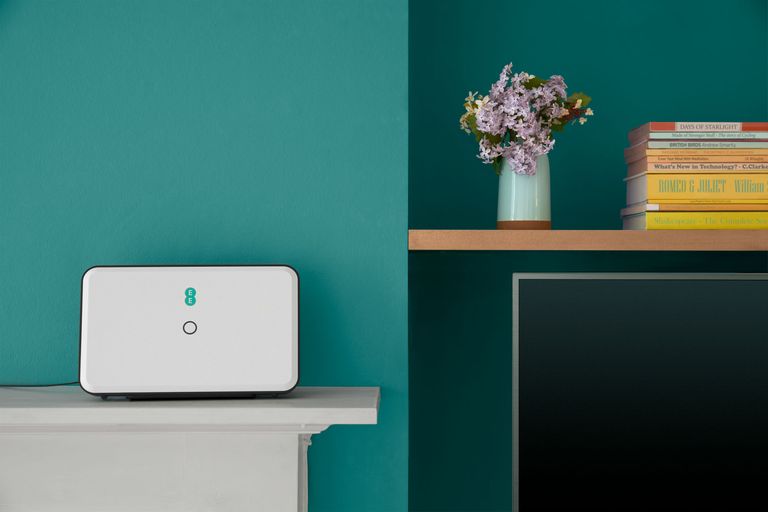Best Practice Guide to Setting Up Multiple Wireless Access Points On The Same Network
Creating a solution to your Wi-Fi woes or making an even bigger mess? You might think that covering a large area with Wi-Fi is as simple as just popping wireless routers on every floor, but it’s not as straight forward as that unfortunately.
Having too many or overlapping access points can create just as many issues as not having enough AP’s on your network. When you are deploying multiple wireless access points on the same network, there are some rules you need to be following – Luckily for you that’s what this Best Practice Guide is here for!
First things first – You need to consider the building materials around you and how they can affect Wi-Fi.
There are various and many structures that can weaken, disrupt and cause negative internet experiences when it comes to Wi-Fi signals. Walls, stairs, lifts, wood, water – There are a multitude of factors that can negatively impact your Wi-Fi network.
- Glass
Glass is a bit of an ‘in thing’ when it comes to more modern workspaces. Plenty of natural light and open, airy offices. Unfortunately, whilst this looks pretty good, it doesn’t lend itself well to Wi-Fi signals. A standard clear window can reduce signal strength by -4db (decibels relative to a milliwatt). This number increases if the windows are double glazed, or even triple. Treatments on the glass such as insulation or light deflection can also have negative effects. This might not sound like a lot, but if you were to be attempting a video conference over Wi-Fi in your glass-walled meeting room with already weak Wi-Fi signals, that -4db reduction could cause some big problems.
- Plasterboard and Insulation
Most walls are made of plasterboard which thankfully won’t cause you too many problems in itself (only a loss of about -2db). However, with most plasterboard walls come foam insulation, metal wiring or other structures inbetween which can cause a reduction in signal strength.
- Wood
Older office buildings, and indeed the majority of homes are made from a wooden framework. You’ll also find it throughout buildings, used for flooring, doors and furniture. Wood is perhaps one of the lesser known materials for affecting Wi-Fi aside from the more obvious ones, but it can have a big effect on Wi-Fi signal strength by reducing it by as much as -6db. This figure will of course only get worse, depending on the thickness of the wood, as well as its water content – Some wooden structures could cause a reduction of -20db.
- Brick Wall
Even just one brick wall will cause you problems. Due to the dense and thick nature of brick, having a wall between an access point and the end user could render the Wi-Fi unusable. Exacerbated further by the mortar holding it all together, you could see a reduction in Wi-Fi signal of -28db.
- Metal
A lot of modern commercial buildings, often used for offices, are made of metal building materials. Unfortunately, metal and cellular signals are not friends, making metal another enemy of Wi-Fi. This is one of the most important elements to consider when planning your network – Overlook this and you could be looking at a reduction in signal of -50db. That’s not good for a business environment relying on Wi-Fi to work! Metal can really obstruct Wi-Fi signals and create dead zones so it’s a must to take into the account any metal structures when planning a network and where to place Access Points.
You might be wondering how to go about all this. One way is to download one of many free apps (Wi-Fi or network analysers). These apps can measure the strength of your Wi-Fi signal as you move around your home or office.
To understand the effects of the structures around you, you can start next to an access point, and then slowly move around the building, past walls and structures that could cause issues.
Wi-Fi signal strength is measured in milliwatts but due to the large numbers can get extremely complex. An alternative is to use dBm (decibels relative to milliwatt). Excellent Wi-Fi signal strength would equate to -30 (a high dBm) with a dead zone being at the lowest of -120 dBm. Ideally, you need your Wi-Fi to be measuring between -60 and -40 dBm.
Unfortunately, even in an ideal environment with no obstructions in the form of the structures mentioned earlier, there are still things that can have a negative impact on your wireless network performance that will mean you will need to set up multiple AP’s.
- Interference from Nearby Networks
If you have another Wi-Fi network nearby, the signal from this and other access points can cause interference, negatively impacting the performance of your network. Any access points on the same channel can cause dropped connections or lost packets while the internet is being used.
- Densely Populated Areas
Unfortunately, not all access points are made for densely populated areas. We may not be a structure, but human bodies (being made up mostly of water) are awful when it comes to Wi-Fi signals. Radio signals and water are not friends. In an area such as an open office where there are lots of bodies in one place, you will need multiple access points to ensure that signals can spread properly and that the required capacities can be supported.
A Best Practice Guide for Multiple Wireless Access Points
It’s pretty clear from our points above that there are many reasons why you may need to set up multiple wireless access points on the same network. You could save yourself a potential headache and get the experts in to do the job for you (that’s us here at Geekabit – Hi!) but if this is a project you want to do yourself then here are our top tips for you to follow.
- Conduct a wireless site survey before setting up your Wi-Fi
We really can’t stress enough how important this step is! Don’t miss it out. It is so important to carry out a Wireless Site Survey as it will give you a clear plan, indicating where to mount your access points. There is really no room for guesswork when it comes to this, if you want a reliable network. Not only does it help with placement of AP’s, but it can also shed light on how best to configure your access points for their optimal performance. Don’t create issues further down the line by skipping the site survey. If you’re not sure where to start, look up our blogs on Site Surveys or get in touch with one of our Wi-Fi experts directly.
- Placement
Thanks to the Wireless Site Survey you’ve done, you should have all the information you need to decide the best locations to place your access points.
If you’ve opted not to go with a site survey, then the old method of just ‘winging it’ had a general rule of thumb of putting access points in the middle of each room where you need WI-Fi. Far be it for us to say that this way won’t work, but it’s probably not the smartest way to install access points. If your business is heavily reliant on WI-Fi for day to day business operations, then we would strongly recommend carrying out a site survey, and using the information you find to place the access points in the optimal positions.
One of the mitigating factors we mentioned above was high density, so a good place to start would be to place access points in the areas where it will be used the most. These areas will require stonger Wi-Fi signals so should be addressed first. Once you’ve got this covered, you can then look at the remaining areas where wireless coverage might not be as important. In this approach, you’re favouring capacity over coverage which seems to be the current trend for network installations.
- Ethernet Cables Keep ethernet cable under 328 feet when connecting access points
So you’ve carried out your site survey, planned where to put your access points – Now you need to check that you can run Cat5 or Cat6 ethernet cables between access points without exceeding 328 feet. The reason for this is anything over this length could cause the dropping of packets which will end up negatively impacting wireless internet performance. If you ask most wireless networking professionals or engineers, you’ll find that they usually limit cables to 300 feet, giving them room for patching.
Need to go further than 328 feet? Don’t despair! You’ll need to use an active component, for example a small (inexpensive) switch that you can place somewhere before 300 feet. This will allow you to extend the cable by another 328 feet without issues.
In some situations, you may need to run the cable for a much longer distance. In these cases, you might want to consider using fibre optic cable – These can be run for several miles in some instances!
Top Tip: Review the costs before carrying it out! Cable runs over big distances can prove pricey, so don’t get any nasty surprises.
- Indoor / Outdoor
Do you need any access points to be outside? If so, make sure you choose the appropriate outdoor access points to get the right coverage. Of course, depending on structure and placement, your indoor access points might provide some coverage outdoors but it’s definitely worth checking where you need coverage and whether you’ll need some additional outdoor access points. The great thing about outdoor access points are their ability to withstand the weather and difference in temperatures (pretty important here in Britain!).
If you’re not just covering an office environment, you might find yourself needing to use an outdoor access point inside. For example, a refrigerated warehouse with cold temperatures would benefit from these. They are also condensation resistant and have internal heaters so are able to function where an indoor one would fail.
- Manage Your Access Points with a Controller
You can get various versions of wireless access point controllers. Some are physically on site where your actual access points are deployed, but you can also get cloud-based controllers which you can use to manage multiple access points across different locations. Access points themselves can also host controller software.
Whichever controller you choose, the benefits are that you can use one interface to control all of your grouped access points. You will also be able to give all access points one SSIS and password, meaning you don’t have to join different networks when you’re moving between different rooms or floors.
Using a controller will give you much more control over your network, keeping it all in order. You will be able to utilise automatic channel management and seamless roaming, which is vital whn setting up multiple access points on the same network.
- Channel Choice
If you want excellent wireless coverage, then proper channel selection is essential. Luckily, you’ve heeded the advice above and opted for a controller which in most cases will choose the correct channel for your access points.
When you are deploying multiple access points on the same network, there is the potential for neighbouring access points to overlap. This will only cause a problem if they are on the same channel – If you don’t use non-overlapping channels then the access points will interfere with each other, causing packet loss during browsing which will result in a negative Wi-Fi experience for the end user.
If you have a high-density network then you’ll need to use the 5GHz band. It offers much more selection when it comes to non-overlapping channels and hence tends to be the favourite when installing networks for high-density wireless deployments using multiple access points. The 2.4 GHz band is rarely used for this type of network due to it only having 11 channels which only provides 3 that don’t overlap (1, 6 and 11).
- Power Settings
You’ll need to bear in mind the coverage area that your access point needs to cover and thus what the power settings need to be in order to function well. For example, if coverage cells are too large then they may then overlap each other, which could cause a device to stay with one access point further away when it could get a better signal from one closer. Obviously you don’t want roaming issues such as this!
Again we find ourselves coming back to the controller – This will likely control the power levels of the access points automatically. In some higher density deployments, you may need to intervene and perform manual power selection. And, once again, you’ll be needing the information gleaned from the site survey to inform your choices here and tune the access points for optimum use in your unique network.
Bit of a lengthy read but if you made it to the end, there’s a good chance you’re ready to go and deploy an efficient wireless network with perfectly placed multiple access points. If you’re not feeling confident, then you’re still in the right place – We’re the Wi-Fi experts and can help with site surveys, network design and installation, just get in touch!










